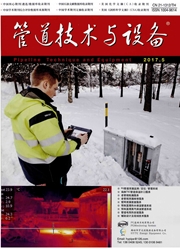

 中文摘要:
中文摘要:
利用热模拟、力学性能测试和显微分析等手段,研究了X70管线钢在临界区加速冷却条件下组织与性能的变化规律.研究表明:通过临界区加速冷却,试验钢可获得贝氏体+铁素体(B+F)双相组织.随着始冷温度的下降,试验钢的B含量减少,F含量增加,导致材料屈服强度下降,塑性提高.当始冷温度为840℃时,X70管线钢在高强韧性的基础上能满足大变形管线钢的技术要求;获得的细小的B板条和较高位错密度的F赋予材料较高的强韧特性和优良的大变形能力.
 英文摘要:
英文摘要:
The relationship between microstructure and properties after the critical zone accelerated cooling for X70 pipeline steel was investigated through thermal simulations, mechanical property tests and microscopic analysis methods. The results show that (B + F) dual-phases microstructure can be obtained by critical zone accelerated cooling. With the decrease of the starting cooling temperature, the content of bainite decreases and the content of ferrite increases, which leads to a decrease of the yield strength and a raise of plasticity. When the starting cooling temperature is 840 ℃, a lower yield ratio, a higher uniform elongation and a strain hardening index can be obtained, which accords with the technical requirements of high deformation pipeline steel. The bainite which has acquired fine laths, and the ferrite with a high dislocation density, can be obtained by critical zone acceler- ated cooling, which offers a higher strength-toughness and a good deformability of experimental steel.
 同期刊论文项目
同期刊论文项目
 同项目期刊论文
同项目期刊论文
 期刊信息
期刊信息
